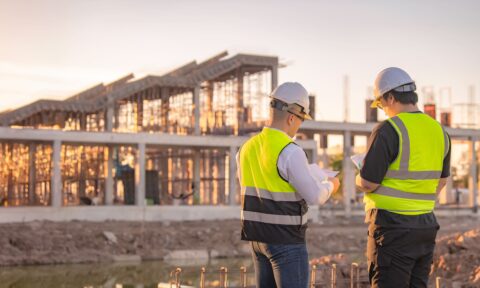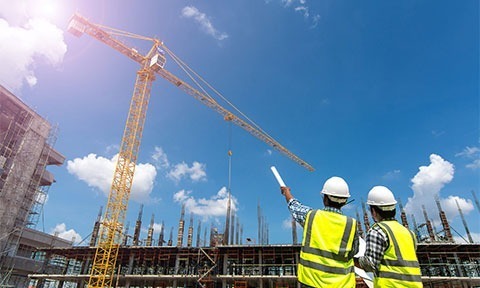Nuclear Power Plant and Structural Response
- Course designed for civil engineers interested in nuclear power plant seismic design and installation.
- Challenges in design, construction, and operation of nuclear power plants highlighted.
- Topics covered include components, safety systems, seismic design, geotechnical aspects, and waste disposal.
- Course aims to provide basics of generating electricity from nuclear reactions for civil engineers.
- Lecturers include experts in geomechanics, structural engineering, and computational mechanics.
Overview
The Nuclear Power Plant Training course is designed for civil engineers interested in understanding seismic design related to nuclear power plants. The course covers basics of generating electricity from nuclear reactions, components in a nuclear installation, safety systems, seismic design, geotechnical aspects, and waste disposal. Lectures are delivered by experts in geomechanics, structural engineering, and computational mechanics to provide in-depth knowledge on the challenges and design considerations of nuclear power plant infrastructures.
Who should attend
Civil Engineers
Course Content
About the Course
Many countries are currently constructing or are in the planning/designing stage of building nuclear power plants. This is primarily to move away from the depleting fossil fuel and in an attempt to combat climate change. However, design construction and operation of these structures poses particular challenge with respect to handling radioactive material. The recent incident of Fukushima Nuclear Power plant highlighted the risk of these structures to earthquakes and eroded public confidence (in some countries such as Germany).
A project of such kind involves extensive civil engineering work. The course is designed for civil engineers with no prior knowledge of seismic design or Nuclear Power Plant Installation design. The course would cover basics of generating electricity from nuclear reaction that is adequate for Civil Engineers. The topics that will be covered are – components in a nuclear installation, safety philosophy and systems, relevant seismic design, geotechnical aspects in the design and waste disposal.
Who should attend?
The course is designed for civil engineers:
Interested in Nuclear Power Plant
Develop understanding seismic design related to Nuclear Power Plant
PROGRAMME
Day 1
08.45-09.00 Delegate Registration
09.00-10.30 Lecture 1: Generating electricity from nuclear reaction and overview of a Nuclear Installation – Prof Subhamoy Bhattacharya
10.30-11.00 Break
11.00-12.30 Lecture 2: Site Response Analysis, SSI (Soil-Structure Interaction) and Advanced Soil Testing- Prof Subhamoy Bhattacharya
12.30-13.30 Lunch
13.30-15.00 Lecture 3: Seismic design and safety related electrical sub-systems (fastening of cable trays). – Prof Subhamoy Bhattacharya
15.00– 15.30 Break
15.30-17.00 Lecture 4: Nuclear Power Plant Infrastructures under extreme dynamic loading conditions and design challenges – Dr Konstantinos Daniel Tsavdaridis
Day 2
09.00 – 10.30 Lecture 5: Structural Non-Linear – Analysis – I – Prof Chris Pearce
10.30 – 11.00 Break
11.00-12.30 Lecture 6: Structural Non-Linear Analysis – II – Prof Chris Pearce
12.30-13.30 Lunch
13.30 – 15.00 Lecture 7: Review of Structural Software used in Nuclear Industry – Prof Chris Pearce
15.00 – 15.30 Break
15:30 – 17:00 Lecture 8: Background & Demonstration of Structural Software (MOFEM – Open Source) – Prof Chris Pearce
CV’s of Lecturers:
Professor Subhamoy Bhattacharya currently holds the Chair in Geomechanics at the University of Surrey where he leads the Geomechanics Research
Group. He is also the Programme Director for the MSc course in “Advanced Ground Engineering/Advanced Geotechnical Engineering” and the Director of Undergraduate Studies in Civil Engineering. Previously, he held the post of Senior Lecturer at the University of Bristol, Departmental Lecturer at the University of Oxford and Academic
fellowship at Tokyo Institute of Technology as well as industrial positions with Fugro Limited (UK) and Consulting Engineering Services (India) Ltd – now
Jacobs. He obtained his PhD from the University of Cambridge, investigating failure mechanisms of pile-supported structures in seismically liquefiable
soils. He proposed a new theory on pile failure which received the 2005 T.K.Hseih award for the best paper in civil engineering dynamics from the
Institution of Civil Engineers. His further work on piles includes design principles for the foundation design of new generation Floating Production
Storage and Offloading platforms, built from his experience designing piles for more conventional offshore structures. His work on p-y curves for clay
appears in the latest API/ANSI/ISO code of practice. His current research interest are foundations for offshore wind turbines, seismic behaviour of piles.
Dr Konstantinos Daniel Tsavdaridis joined the School of Civil Engineering at the University of Leeds in 2012 and promoted to Associate Professor of Structural Engineering in 2015, following an MSc and DIC in Structural Engineering from Imperial College, and a PhD in 2010 at City University London. Since 2012, Dr Tsavdaridis is leading the
Steel and Composite Structures research group within the School and co-leading the Materials and High-Value Engineering research theme. He is a Professional/Chartered Civil Engineer recognised by the European Federation of National Engineering Associations (FEANI). His research expertise is in structural product development (holds a few patents) that embraces resilience and sustainability, particularly the development of innovative steel and steel-concrete composite structural systems and members as well
as testing large and full-scale structures. He is also core member of the successful EPSRC Strategic Equipment Grant proposal for establishing a MultiAxial
Dynamic Shaking Table testing facility at Leeds (EP/L022648) and he holds a portfolio of research grant over £1m. Some of his research outcomes are widely used by the industry in a number of applications such as sensitive structures and smart buildings and he has published more than 80 scientific articles, journal publications, technical
reports and international conference papers. Dr Tsavdaridis provides technical consultancy to Pell Frischmann Consultants Ltd., specialising in Nuclear Power Plant Infrastructures under extreme dynamic loading conditions (e.g. pipe explosion, aircraft impact and sloshing effects from the indoor pools). He led PF’s in-house team as Principal Structural Stress Analyst.
Professor Chris Pearce is a Professor of Computational Mechanics and hold the Royal Academy of Engineering / EDF Energy Research Chair at Glasgow. He graduated from the University of Wales Swansea in Civil Engineering in 1992. This was followed by an MSc and PhD from the same University. His first academic appointment was as a lecturer at the University of Glasgow. He was promoted to Professor in 2010. He is currently Head of the Infrastructure and Environment Research Division and Convenor of
Research for the School of Engineering. He is a Fellow of the Institution of Civil Engineers and a Chartered Engineer
Nuclear Power Plant Training



